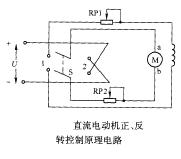DC motors are widely used in various applications due to their controllable speed and torque characteristics. The starting process of a DC motor involves the initial rotation from zero speed to its rated speed. This phase is critical as it determines the motor’s performance and system stability.
1. DC Motor Starting Methods
a. Full-Voltage Start: This method involves directly connecting the motor to the rated voltage. While it allows for quick start-up due to high initial torque, it also results in a very high inrush current, which can damage the motor or cause voltage dips in the power supply. It is typically suitable for small motors in household appliances.
b. Varistor Start: In this approach, resistors are connected in series with the armature circuit to limit the starting current. Once the motor reaches its operating speed, the resistors are removed. Although this reduces the starting current, it introduces additional energy losses and requires more complex control systems.
c. Step-Down Start: This method uses a variable voltage power supply to reduce the motor’s supply voltage during start-up. It is ideal for high-power motors where large starting currents could be problematic. However, it requires specialized equipment, making it more expensive and less common in low-cost applications.
2. DC Motor Speed Control
Speed regulation in DC motors is achieved by adjusting parameters such as voltage, armature resistance, or field flux. The mechanical characteristic equation of a DC motor helps determine how these adjustments affect the motor’s speed. For example:

Where M is the torque, U is the supply voltage, R is the armature resistance, and Φ is the main magnetic flux. Adjusting any of these variables can change the motor’s speed.
a. Armature Resistance Control: Adding a variable resistor in series with the armature increases resistance, which lowers the speed. However, this method reduces efficiency and makes the motor’s speed sensitive to load changes.
b. Field Flux Control: By changing the resistance in the excitation circuit, the magnetic flux can be adjusted. This method is effective for increasing speed but cannot exceed the motor’s rated speed. It also results in stiffer mechanical characteristics.
c. Terminal Voltage Control: Changing the terminal voltage directly affects the motor’s speed. This method is commonly used in applications where speed needs to be reduced, but it cannot increase the motor’s speed beyond the rated voltage.

3. DC Motor Reversal
Reversing the direction of a DC motor is relatively simple. It can be done by reversing the current in the armature winding or by changing the polarity of the field magnet. For permanent magnet DC motors, only the armature current direction needs to be reversed.
The circuit diagram shows a double-pole double-throw switch that controls the direction of current flow through the armature. When the switch is set to position “1,†the current flows from brush A to brush B, causing the motor to rotate in one direction. When the switch is moved to position “2,†the current reverses, resulting in the opposite rotation. This method is widely used in applications requiring bidirectional motion, such as recorders and robotic systems.
Used Laptops For Sale,Old Laptop For Sale,Used Laptop Price,Refurbished Laptops For Sale
Guangzhou Panda Electronic Technology Co., LTD , https://www.panda-3c.com